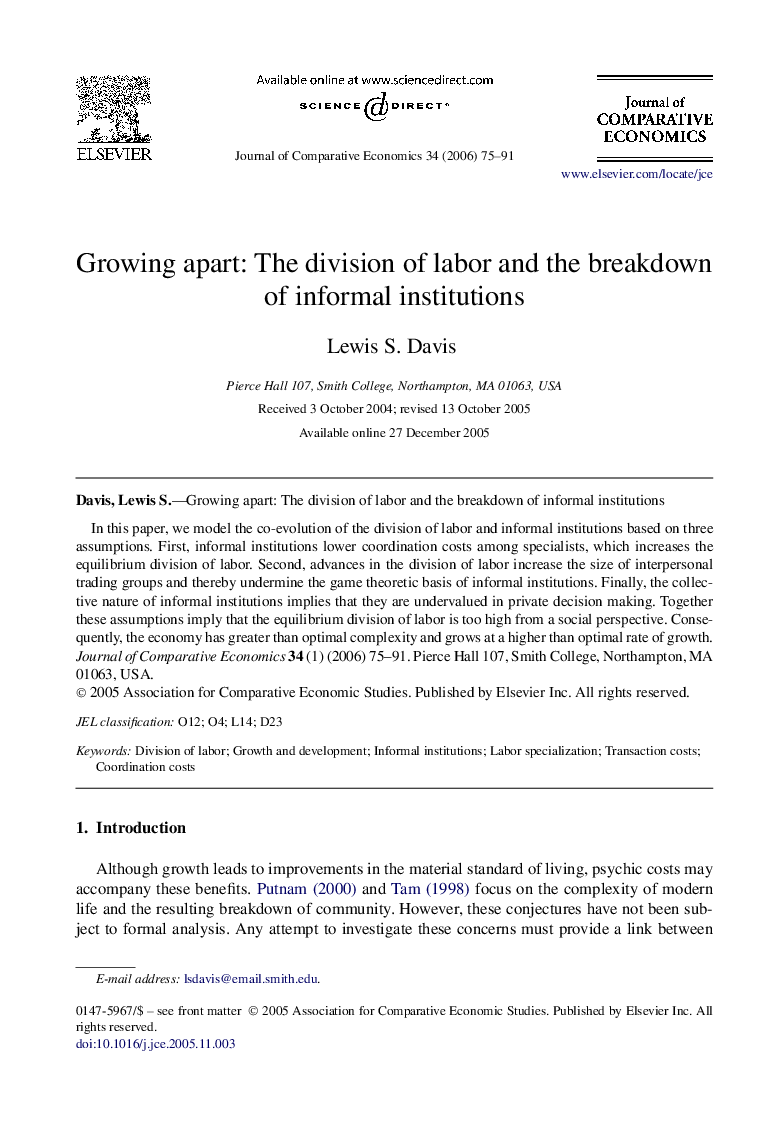| Article ID | Journal | Published Year | Pages | File Type |
|---|---|---|---|---|
| 5092729 | Journal of Comparative Economics | 2006 | 17 Pages |
Abstract
In this paper, we model the co-evolution of the division of labor and informal institutions based on three assumptions. First, informal institutions lower coordination costs among specialists, which increases the equilibrium division of labor. Second, advances in the division of labor increase the size of interpersonal trading groups and thereby undermine the game theoretic basis of informal institutions. Finally, the collective nature of informal institutions implies that they are undervalued in private decision making. Together these assumptions imply that the equilibrium division of labor is too high from a social perspective. Consequently, the economy has greater than optimal complexity and grows at a higher than optimal rate of growth. Journal of Comparative Economics 34 (1) (2006) 75-91.
Keywords
Related Topics
Social Sciences and Humanities
Economics, Econometrics and Finance
Economics and Econometrics
Authors
Lewis S. Davis,
